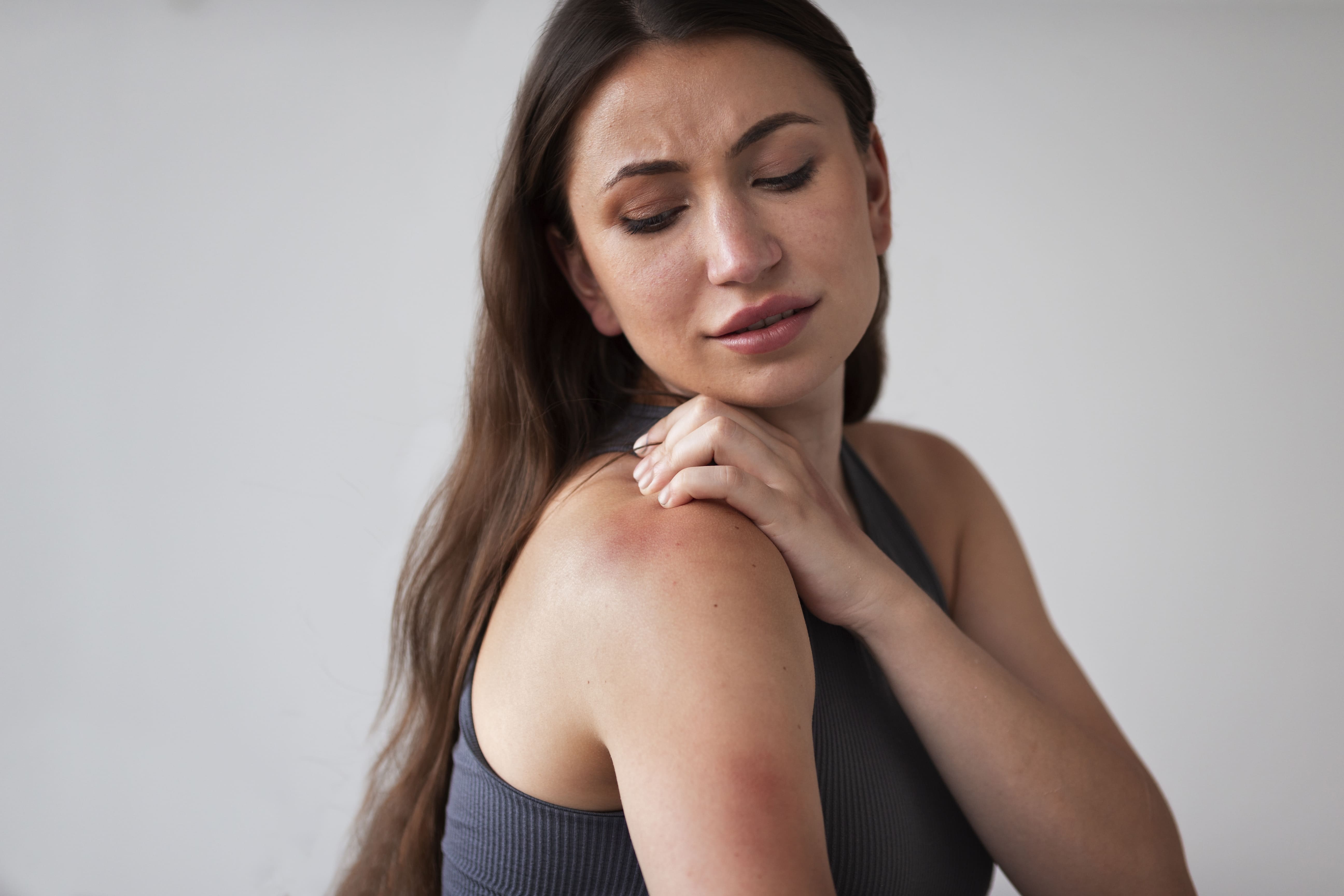Atopic Dermatitis: Chronic Skin Allergy Program

What is Skin Allergy (Atopic Dermatitis)?
Atopic dermatitis is a chronic rash on the cheeks, neck, wrists, arms, hands, and feet, but rashes in children tend to be more severe in adults. The main cause is skin inflammation which may be caused by external and internal factors including
- Internal factors: including internal inflammation, chronic constipation, stress, lack of sleep, food allergies, and low body immunity.
- External factors: including the reaction between the skin and chemicals causing irritation, dry skin irritation, and allergic rashes. These chemicals include cosmetics, perfume, and detergent.

Skin allergy treatment program
Although atopic dermatitis is chronic and persistent, following the instructions and taking good care of your skin can relieve the symptoms and lead to faster recovery. Patients should follow these recommendations:
- Avoid eating foods that cause food allergies strictly because they can affect the immune system and lead to worse conditions.
- Refrain from drinking alcohol.
- Should get enough sleep at least 8 hours a day.
- Find ways to manage stress because stress will stimulate the secretion of Corticotropin and Cortisol, which can impair the immune system.
- Avoid washing hands frequently or apply a moisturizing cream that is gentle to the skin without irritation.
- Try to defecate daily to reduce the accumulation of toxins in the body.
- Because people with this disease tend to have low levels of essential fatty acids, they should increase the intake of essential fatty acids to reduce inflammation, including Omega-3 fatty acids found in fish oil and hemp seed oil.
- Avoid food additives such as preservatives and flavoring substances.
- Avoid UVA and UVB rays in sunlight.
- Avoid using hair dye.
- Eating foods that contain low amounts of sugar and saturated fats, including vegetables, fruits, and nuts.

In the case of hyperpigmentation
Due to atopic dermatitis, it can be treated in many ways, including
- Apply creams containing whitening ingredients such as licorice root extract, Indian gooseberry extract, turmeric, vitamin C, arbutin, retinol, salicylic acid, or azelaic acid.
- Apply sunscreen with an SPF of at least 30 days to prevent darker spots or new spots.
- Use fruit acids (AHA), an enzyme from fruits with a weak acidic effect, causing superficial skin peeling and new cell production. This causes whiter skin and fewer black marks, but it should only be done by experts to prevent the complications such as skin irritation. However, in the case of Ms. Thapanee with contact dermatitis, the treatment is required higher caution.
- Push medicine into the skin by using electricity that is gentle to the skin together with ultrasound waves to carry substances such as acid, vitamin A, and vitamin C, which have the effect of reducing dark spots in the skin.
- Use Nd Yag with a wavelength of 532 or 1064 nm, lasers that are specific to the pigment, or concentrated IPL to reduce dark spots and adjust the skin color to become even. This is the fastest way to remove dark spots.
Contact Us
- Call center: 089-9006100
- North Park (Ngam Wong Wan): 02-954-9440
- Ratchapruek: 02-863-8765
- Sukhumvit 39: 02-259-6992
- Line OA: @MEDISCI





